Ever found yourself in the middle of a busy day, surrounded by toys, and your little one suddenly decides that the couch is a canvas for their latest masterpiece? We’ve all been there, wondering how to channel that creative energy into something productive. Welcome to She Is A Good Mommy Blog, where we understand that every day with toddlers and preschoolers is a new adventure, filled with both joy and the occasional chaos.
Finding activities that not only occupy our children but also help them develop essential problem-solving skills is a win-win for any family. In this article, you’ll discover over 13 engaging activities designed to challenge and delight your little ones, turning everyday moments into opportunities for growth and learning.
Ready to transform those curious minds into little problem solvers? Dive in, and you’ll want to save this guide for those moments when you need a helping hand in nurturing your child’s potential!
1. Shape Sorting Fun
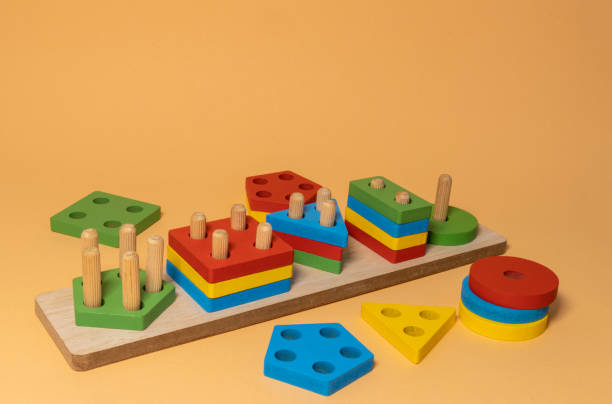
Shape sorting is an engaging way to naturally introduce problem-solving skills to your toddler or preschooler. Imagine a rainy afternoon, and you, alongside your little one, are surrounded by colorful shapes. As you both sit on the floor, your child begins matching circles, squares, and triangles to their corresponding slots. This simple activity not only keeps them entertained but also helps improve their fine motor skills and hand-eye coordination.
Here’s how you can make the most out of this activity:
- Start with basic shapes and gradually introduce more complex ones as your child becomes more comfortable.
- Encourage your child to describe each shape and its color, turning it into a fun vocabulary lesson. 🟥🔵
- Celebrate their successes with a high-five or a happy dance to boost their confidence!
Shape sorting offers a wonderful opportunity for parents to bond with their children while laying the groundwork for essential cognitive skills. It’s an activity that grows with your child, adapting to their developing abilities.
Remember, every small achievement is a step towards building their problem-solving foundation. Embrace the mess, the laughter, and the learning moments. You’ve got this, mom! 🌟
2. Color Matching Game

One effective and delightful way to engage your little one in problem-solving is through a color matching game. Sarah, a mom of an energetic three-year-old, found that using colorful pom-poms and matching cups transformed playtime into a learning adventure. By simply spreading out a rainbow of pom-poms and providing cups in corresponding colors, she encouraged her child to sort them, sparking curiosity and concentration. 🌈
To set up your own color matching game at home, follow these simple steps:
- Gather a variety of colorful items such as pom-poms, blocks, or buttons.
- Provide containers, bowls, or cups in matching colors.
- Invite your child to match the items to the corresponding container.
- Encourage them to describe the colors and count the items as they sort.
This activity not only enhances color recognition but also promotes fine motor skills and critical thinking. As they play, take a moment to observe and engage, asking questions that guide their understanding.
Remember, these moments of shared learning are precious opportunities to celebrate your child’s growth. With each game, you’re nurturing their ability to solve problems independently while bonding over joyful, shared experiences. 💕
3. Puzzle Time Play
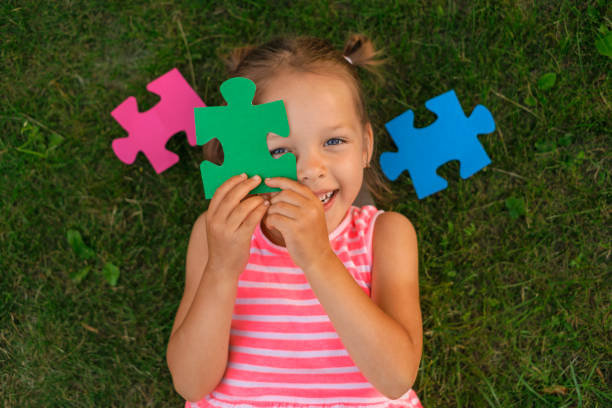
Puzzle time can be a magical experience for both toddlers and preschoolers. I remember when my little one first tackled a simple wooden animal puzzle. Her eyes lit up with each piece that clicked into place, sparking a sense of achievement that was contagious.
To get started, choose puzzles with large, easy-to-grasp pieces and colorful designs. Begin with simple puzzles of about 4-6 pieces, gradually increasing complexity as your child gains confidence. Sit with your child, offering gentle guidance and encouragement as they navigate each challenge.
- Pick puzzles that feature your child’s favorite themes, like animals or vehicles.
- Encourage them to try different pieces without rushing to help immediately.
- Celebrate every small success with cheers and high-fives 🎉.
The benefits are plentiful: puzzles improve fine motor skills, enhance memory, and boost problem-solving abilities. As a parent, witnessing your child’s growth can be incredibly rewarding.
Remember, the goal isn’t just to complete the puzzle but to enjoy the journey together. Be patient and savor these precious bonding moments. You’re building not just their skills, but also beautiful memories that will last a lifetime.
4. Stacking Block Challenge
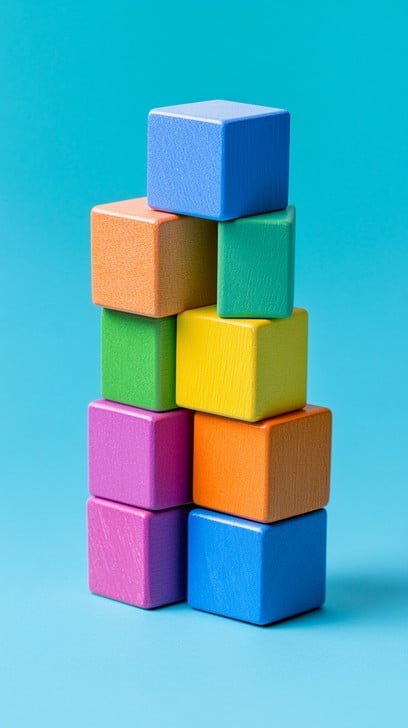
The Stacking Block Challenge is a classic activity that offers endless learning opportunities for little ones. Picture this: your toddler eagerly piles up colorful blocks, only to watch them tumble down with a giggle 😄. This simple activity isn’t just about having fun; it’s a fantastic way to nurture problem-solving skills.
As a mom, you might find yourself constantly amazed by how much your child learns from stacking blocks. My own daughter, for instance, discovered how to balance the blocks by experimenting with different shapes and sizes. Watching her triumphantly stack her first tower was a proud moment for both of us!
- Begin with a variety of block sizes and shapes to encourage exploration.
- Guide your child by asking questions like, “What happens if you put the big block on top?”
- Celebrate small achievements to build confidence and resilience.
There are numerous benefits to this activity. It enhances fine motor skills, teaches patience, and encourages critical thinking. Plus, it provides a precious opportunity for bonding with your child while watching their creativity soar.
So, grab a set of blocks and watch as your child’s imagination and problem-solving abilities stack up to new heights. Remember, each topple is just another chance to try again and grow! 🚀
5. Creative Building Blocks
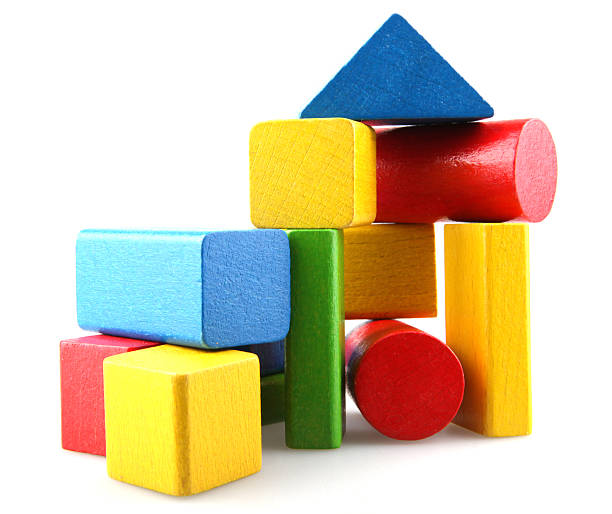
Building blocks are more than just toys; they’re tools for developing a child’s creativity and problem-solving skills. Picture this: Sarah, a mom of two energetic toddlers, watches as her kids stack colorful blocks. With each wobbly tower they build, they learn about balance, patience, and perseverance. Engaging in this activity together not only enhances their spatial awareness but also strengthens their bond.
Here’s how you can make the most of building blocks at home:
- Start by encouraging free play. Allow your child to explore different shapes and colors without any specific instructions.
- Introduce challenges, like constructing the tallest tower or creating a specific shape. This adds a layer of excitement and problem-solving.
- Join in the fun! Build alongside your child, offering gentle guidance and celebrating their creative solutions.
As your little one navigates through each block-building session, they’re honing critical thinking skills and boosting their confidence. Plus, it’s a wonderful opportunity for you to witness their creativity blossom.
Remember, every block they lay is a step towards independence and self-expression. Enjoy these moments, and cherish the joy they bring to both you and your child! 🌟
6. Animal Sound Safari

Embark on an exciting “Animal Sound Safari” with your little one! This engaging activity not only sparks curiosity but also enhances your child’s listening and imitation skills. Imagine the giggles when you and your toddler start roaring like lions or chirping like birds. 🦁🐦
As a mom, you can create a simple safari experience right in your living room. Gather a few stuffed animals or picture books featuring different creatures. Then, take turns making the sounds and guessing the animal. It’s a fun way to build vocabulary and improve memory.
- Choose a variety of animal sounds to mimic.
- Encourage your child to guess the animal noise and then take their turn.
- Celebrate each correct guess with a high-five or a special dance! 🎉
Not only does this activity foster creativity, but it also strengthens the bond between parent and child. It provides a playful environment for learning, where mistakes are part of the fun and discovery.
Remember, the joy is in the journey of learning together. Let the laughter and shared moments be your guide. 🐾
7. Nature Scavenger Hunt

Embark on a nature scavenger hunt with your little one and watch their problem-solving skills blossom. This outdoor adventure is perfect for curious toddlers and preschoolers, offering them a chance to explore and learn in nature’s classroom. As a mom, I’ve found that even a simple list of items like a pinecone, a feather, or a smooth stone can turn a regular walk into an exciting quest.
Here’s how to get started:
- Create a list of nature items that are safe and easy to find in your area.
- Equip your child with a small bag or basket to collect their treasures.
- Guide them gently, allowing them to lead the way and make discoveries on their own.
Not only does this activity encourage observational skills and critical thinking, but it also promotes physical activity 🌿. Plus, it’s a wonderful opportunity for moms to enjoy some fresh air and a change of scenery with their kids.
Remember, the goal is to make learning a joyful experience. With every leaf and twig, your child is building confidence and curiosity, one small discovery at a time. 🌼
8. Water Play Exploration

Water play is more than just splashing around; it’s a gateway to imaginative problem-solving for toddlers and preschoolers. Picture a sunny afternoon in the backyard, a small kiddie pool filled with water, cups, and floating toys. As a mom, you might notice your child experimenting with pouring water from one container to another, discovering concepts like volume and cause-and-effect.
To make the most out of water play, consider these steps:
- Set up a safe, water-friendly area in your yard or bathroom.
- Provide a variety of tools like funnels, sponges, and small boats.
- Encourage your child to explore by asking open-ended questions like, “What happens if you squeeze the sponge?”
Water play enhances sensory exploration and fine motor skills while offering a relaxing environment for both parent and child. Watching your little one interact with water also gives you insight into their problem-solving process.
Remember, each splash and giggle is a step toward your child’s cognitive development. Embrace the mess and cherish the laughter, knowing these playful moments are building important skills. 🌟
9. Simple Cooking Tasks

Getting little ones involved in the kitchen with simple cooking tasks can be a delightful bonding experience and a fantastic way to teach problem-solving skills. Picture this: you’re preparing a meal, and your toddler is eager to help. Assigning age-appropriate tasks like tearing lettuce for a salad or stirring pancake batter can make them feel like an important part of the process. 🍽️
Here’s how to make it effective:
- Start by setting up a safe space, keeping sharp tools and hot surfaces out of reach.
- Choose tasks that match their skill level, such as washing vegetables or mixing ingredients.
- Encourage them to think about the steps involved, asking questions like “What comes next?”
Not only does this boost their confidence, but it also sharpens their decision-making skills. Plus, it’s a sneaky way to teach them about healthy eating habits! 🥦
For moms, it’s a win-win: you get a little helper, and your child learns patience and the value of teamwork. So, next time you’re prepping a meal, invite your toddler to join in and watch them grow with each task. 👩🍳
10. Pattern Recognition Play

Engaging toddlers and preschoolers in pattern recognition play is a wonderful way to boost their cognitive skills while having fun. As a mom, you might find your little one naturally drawn to identifying patterns in everyday objects. Try incorporating this into their playtime by using colorful blocks or beads. Set up a simple sequence using two colors and encourage your child to continue the pattern. You can also use objects like utensils or fruits during meal prep to create impromptu pattern games.
Here’s a simple step-by-step to try:
- Choose an assortment of colorful items, like blocks or buttons.
- Create a simple pattern, such as red-blue-red-blue.
- Ask your child to replicate or extend the pattern.
- Gradually increase complexity as they become more confident.
For parents, it’s a joy to watch as your child begins to understand and recognize patterns. This activity not only develops their problem-solving skills but also strengthens their logical thinking and concentration. 🎨
Encouraging pattern recognition is not just educational; it’s also incredibly rewarding for both you and your child. Celebrate their progress and cherish the moments as they discover the world around them, one pattern at a time. 🌟
11. Hide and Seek Adventure

Bringing a new twist to a classic game, “Hide and Seek Adventure” is both fun and educational for little explorers. Imagine the excitement as your toddler embarks on a quest to find hidden treasures around the house. From a mom’s perspective, this game not only keeps the kids entertained but also helps them develop crucial problem-solving skills. 🏠🔍
To set up the adventure, gather a few favorite toys or items and hide them in safe, accessible places. You can provide clues or create a simple treasure map to guide them. As they search, they learn to follow directions and think critically about where each item might be.
- Choose a theme, like a pirate treasure hunt, to make the adventure more exciting.
- Hide items in different rooms or areas, ensuring they’re safe for little hands.
- Encourage them with guiding questions rather than direct answers to boost their reasoning skills.
For parents, this activity offers a moment of peace while watching their child’s curiosity and confidence bloom. Plus, it’s a delightful way to bond as you play along or simply enjoy their giggles. Remember, every hidden object found is a step towards building independence and self-assuredness in your little one. Keep it light-hearted and let the adventure unfold naturally. Happy seeking! 🌟
12. Craft Stick Creations

Engaging toddlers and preschoolers with craft stick creations is a delightful way to boost their problem-solving skills. Picture this: a rainy afternoon, and your little one decides to build a bridge for their toy cars. With craft sticks, glue, and a dash of imagination, your child gets to work. 🌧️🚗
From a mom’s perspective, it’s incredible to watch them experiment with different structures, learning through trial and error. Encourage your child by asking questions like, “How many sticks do you think you’ll need?” or “What will make it stronger?” This not only enhances their critical thinking but also strengthens your bond as you explore solutions together.
- Gather a variety of craft sticks and glue.
- Encourage your child to imagine what they want to create—perhaps a house or a bridge.
- Guide them as they experiment with different designs, reminding them that mistakes are just part of the learning process.
Craft stick creations offer a perfect blend of learning and fun, allowing kids to develop spatial awareness and fine motor skills. For parents, it’s a chance to engage meaningfully with their child, fostering open communication and creativity.
Each completed creation is a testament to your child’s perseverance and imagination. Celebrate their accomplishments and encourage them to take on new challenges, knowing they’re building essential life skills with every stick they glue. 🌟
13. Interactive Storytelling Session
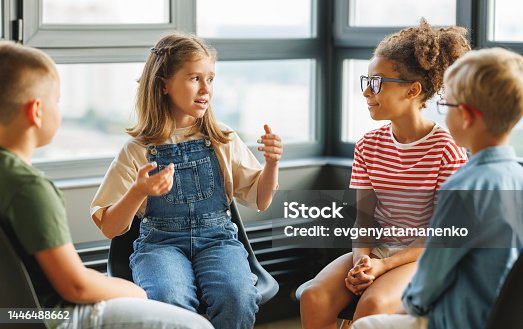
Interactive storytelling is a magical way to enhance your child’s problem-solving skills. Picture this: you’re a mom with a lively toddler who loves hearing about heroic adventures. As you weave tales of brave knights or clever animals, invite your child to decide what the characters should do next. This approach not only captivates their imagination but also encourages critical thinking.
Here’s how to start:
- Choose a simple story and pause at key moments.
- Ask your child what they think should happen next and why. 🧚
- Encourage them to think of different solutions and outcomes.
- Build on their ideas to guide the story forward.
Not only does this method nurture creativity, but it also boosts language skills and confidence. As a bonus, it creates cherished bonding moments. Whether it’s a bedtime story or a lazy afternoon tale, these sessions are a win-win for both of you.
Remember, every story is a new adventure, and each decision is a step towards growing their problem-solving prowess. Enjoy these storytelling moments and watch your child’s imagination soar! 🌟
In exploring the 13+ problem-solving activities for toddlers and preschoolers, we’ve uncovered a treasure trove of engaging experiences. From building towers with blocks to interactive storytelling, sensory play, and nature explorations, each activity is designed to ignite curiosity and foster critical thinking in your little ones. As you nurture these budding problem-solvers, remember that the journey is as important as the destination. Celebrate small victories and cherish moments of discovery.
Empowerment begins at home, and you’re equipping your child with invaluable skills that will serve them throughout their lives. Let this article serve as your guidebook, a resource you can turn to whenever you’re looking to inspire and challenge your child in playful, meaningful ways.
Don’t let these ideas slip away! Pin this article to keep these activities at your fingertips. Whether you’re planning a rainy day or just a creative afternoon, having this list saved will spark joy and innovation in your parenting journey.
Remember, every problem solved today is a step towards a brighter, more capable tomorrow. So let’s embrace the wonder of learning and the joy of problem-solving together. Save this article and embark on this exciting adventure with your little learner!

Hi, I’m Sarah West, the voice behind She Is a Good Mommy and a proud mom of two. Through this blog and my Pinterest community (@SheIsAGoodMommy), I share practical parenting hacks, fun toddler activities, and tips for balancing motherhood with self-care.
Parenting isn’t easy, but with positivity, patience, and practical strategies, it can be incredibly fulfilling. My goal is to support fellow moms with ideas and encouragement while reminding you to prioritize your well-being—you deserve it, Mama!

